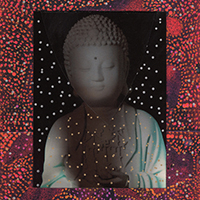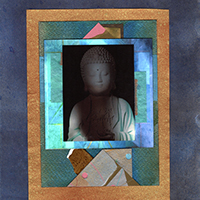Exhibits › American Zen: A Creative Mix of East and West
|
Like many Americans who came of age during the 1960s and 70s, I was exposed to Zen philosophy and Asian art during a time of tumultuous cultural change. These traditional Buddhist mindsets were antidotes to the prevailing chaos and anomie.
Young artists, writers, musicians, and scientists were especially open to the Eastern ideals of meditative calm, simplicity, and acceptance of the natural cycle of decay and rebirth.
Over the last four decades, this aesthetic outlook has entered the mainstream American culture. Although most Westerners cannot exactly define “Zen,” they readily recognize what it looks like — spontaneous ink brushstrokes, muted colors, minimalist abstract patterns, rough and irregular textures…
As America becomes more open to things Asian, it is ironic that China, Japan, and Southeast Asia have co-opted our rampant consumerism. But in a wired world augmented by global tourism, there is an inevitable mixing, churning, and hybridization of different societies.
I hope that my paintings, prints, and photographs will enrich your sense of Zen’s “quiet eye” and be a source of reflective pleasure.
Bob Barancik
Founder and Artist-In-Residence
CreativeShare
www.creativeshare.com












































